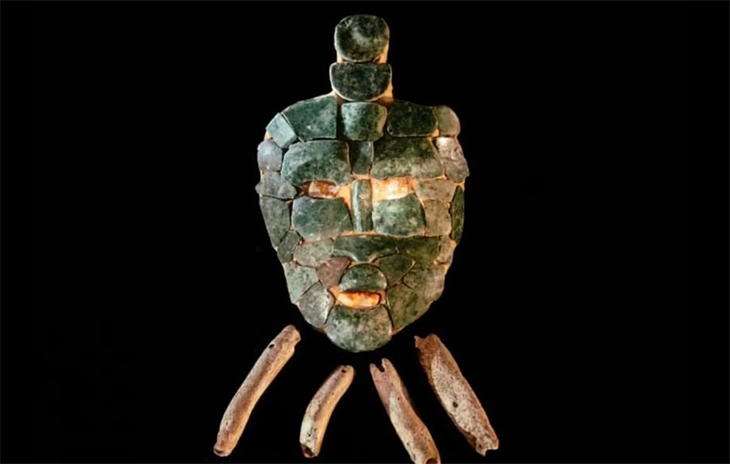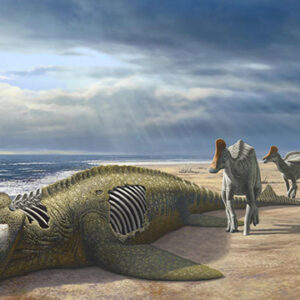
In a lesser-known enclave of the Mayan Empire nestled within the Guatemalan landscape, archaeologists unearthed a remarkable relic: the jade funerary mask adorning the countenance of a revered monarch. This monumental find unfolded amidst the ancient vestiges of Chochkitam, a city veiled in obscurity within the northeastern expanse of Peten.
Despite its initial discovery in 1909 during the Pre-Classic Period of Mayan civilization, the true extent of Chochkitam’s historical wealth remained concealed until recent technological advancements revealed a clandestine chamber lying beneath the regal apex of the pyramid.
Harnessing the precision of LiDAR technology, researchers discerned the overlooked sanctum, evading the plundering grasp of tomb raiders. Embarking on a collaborative endeavor, a consortium comprising scholars from Tulane University in Louisiana, the University of Alabama, alongside esteemed Guatemalan counterparts, commenced the meticulous excavation of this subterranean enclave.
Within the depths of the chamber, an unparalleled narrative of continental significance unfurled. Amongst the remnants of antiquity lay a mosaic of artifacts and remains, each imbued with the enigmatic essence of Mayan lore. A human skull, cradled within a stone sarcophagus-like vessel, bore witness to the passage of time. Carved human bones, etched with the cryptic script of hieroglyphs, whispered tales of dynastic lineage. Offerings, fashioned from the iridescent shells of oysters and the intricate craftsmanship of ceramics, attested to ceremonial reverence.
Yet, it was the kaleidoscopic fragments of jade that crowned this archaeological triumph. Pieced together with meticulous care, they coalesced into a resplendent visage—the jade funerary mask—bestowing a tangible embodiment of regal grandeur upon the ancient sovereign. This exquisite artifact, borne from the depths of time, stands as a testament to the enduring legacy of the Mayan Empire, a testament unveiled through the tireless endeavors of modern-day explorers.
“Everything suggests to me that this was a Maya king who was part of a network of Maya royalty in the sphere of influence of Tikal and Teotihuacán,” Francisco Estrada-Belli, a professor at Tulane University, said when he spoke to Nat Geo.
Alexandre Tokovinine, an epigraphist from the University of Alabama, has meticulously decoded the hieroglyphs inscribed on ancient bones, unveiling the name “Itzam Kokaj Bahlam.” This significant discovery is believed to identify the long-forgotten ruler who governed Chockitam nearly 1,700 years ago.
The deciphered hieroglyphs provide a glimpse into the past, suggesting that the mask uncovered alongside the bones played a pivotal role in royal ceremonies. It is speculated that during these ceremonial occasions, the king would embody the persona of the storm god revered by the Maya civilization. Notably, one of the bones bears a carving depicting the king holding a head resembling the dimensions of the discovered mask.
Tokovinine, in collaboration with Estrada-Belli, is spearheading the training of a team of Guatemalan archaeologists. This initiative aims to sustain the momentum of the ongoing excavations, which have been underway since 2019. Their joint efforts promise to unravel further secrets buried within the ancient site of Chockitam.
Situated far from the Mayan heartland in Mexico, Chockitam emerges as a focal point for a provocative theory challenging conventional views of Mayan royal society. This theory suggests that Mayan customs and characteristics were significantly influenced by the ruling dynasties of other Mesoamerican power centers during that era. The ongoing excavations at Chockitam hold the potential to reshape our understanding of the intricate web of influences shaping the Mayan empire.
What are your thoughts? Please comment below and share this news!
True Activist / Report a typo


